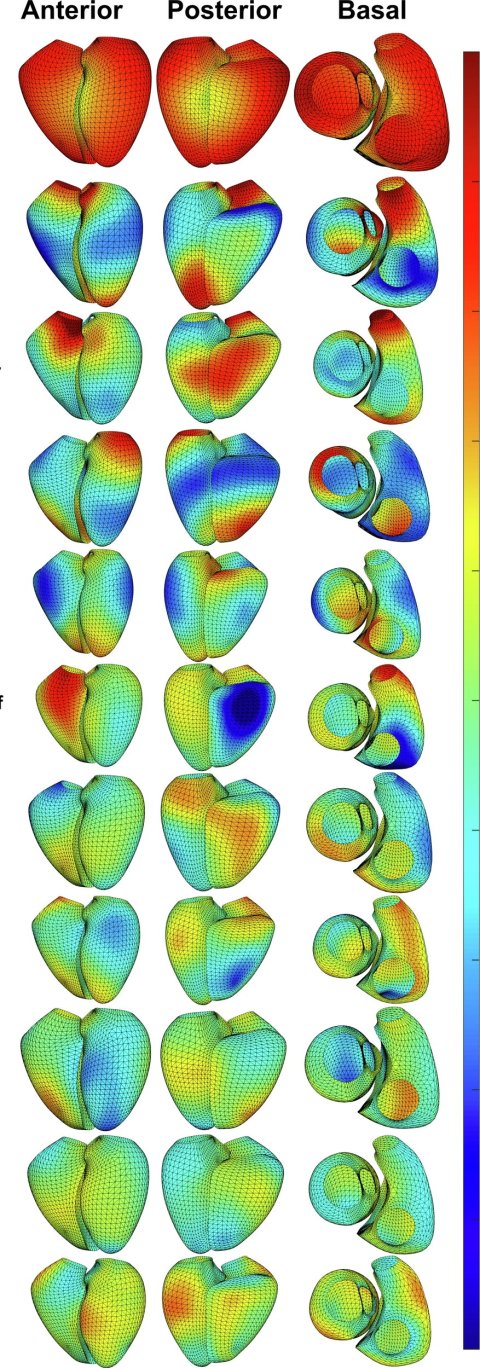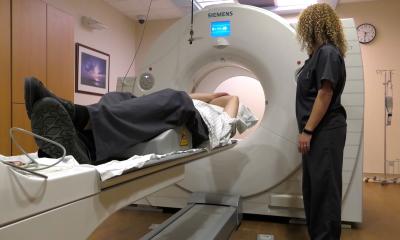News • Study on ventricular shapes
How heart shape links to cardiovascular disease risk
A groundbreaking multi-national study has revealed that the shape of the human heart, influenced by genetic factors, could serve as a valuable predictor for cardiovascular disease risk.

Image source: Burns R et al., Nature Communications 2024 (CC BY 4.0); figure created using Matlab R2022a.
Researchers from Queen Mary University of London, King’s College London, University of Zaragoza, University College London and Complexo Hospitalario Universitario A Coruña in Spain have published findings in the journal Nature Communications that show the genetic structure of the heart’s shape may offer new insights into individual heart health.
This study is the first to examine the genetic basis of both right and left ventricles, using advanced 3D imaging and machine learning, which allowed researchers to analyse the heart’s shape in a comprehensive, multi-dimensional manner. Previous research focused primarily on the size and volume of specific heart chambers, limiting their understanding of how structural variations might influence disease risk. By shifting focus to shape, this study has identified new heart-associated genes and unveiled biological pathways that link the heart structure to cardiovascular conditions.
“This study provides new information on how we think about heart disease risk,” said Patricia B. Munroe, Professor of Molecular medicine at Queen Mary and co-author of the study. “We've long known that size and volume of the heart matter, but by examining shape, we’re uncovering new insights into genetic risks. This discovery could provide valuable additional tools for clinicians to predict disease earlier and with more precision.”
The team used cardiovascular MRI images from over 40,000 individuals from the UK Biobank, a large-scale biomedical database and research resource containing genetic and health information from half a million UK participants, to create 3D models of the ventricles. Through statistical analysis, they identified 11 shape dimensions that describe the primary variations in heart shape.
Subsequent genetic analysis found 45 specific areas in the human genome linked to different heart shapes. Fourteen of these areas had not been previously known to influence heart traits.
Dr Richard Burns, Statistical Geneticist at Queen Mary said: “This study sets an important foundation for the exploration of genetics in both ventricles. The study confirms that combined cardiac shape is influenced by genetics, and demonstrates the usefulness of cardiac shape analysis in both ventricles for predicting individual risk of cardiometabolic diseases alongside established clinical measures.”
Cardiovascular disease is among the leading causes of death in the UK and globally. The findings of this study could change how cardiac disease risk is evaluated. Genetic information related to heart shape can provide a risk score for heart disease, offering potentially early and more tailored assessment.
This research marks an exciting new chapter in understanding how genetics influence the heart and opens the doors to further studies on how these findings could be integrated into clinical practice, ultimately benefiting millions at risk of heart disease.
Source: Queen Mary University of London
18.11.2024











